Elephant Pants and Beyond: The Enchanting Comforts of Thai Bottom Wear
Elephant Pants and Beyond: The Enchanting Comforts of Thai Bottom Wear
วันที่นำเข้าข้อมูล 17 เม.ย. 2568
วันที่ปรับปรุงข้อมูล 17 เม.ย. 2568
What could be more Thai than elephant pants? Once, they were considered touristy souvenirs — a dead giveaway of someone’s first day in the Land of Smiles. Not anymore! These incredibly comfortable pants have made a comeback among young trendsetters and the irreverently casual.
But where did they come from? Are there any other Thai fashion items that could follow suit? Let’s get to the bottom of Thai bottom wear.
Early Siamese sarongs and chong kraben
Fashion follows function, so when it comes to Thai pants and other trousers, there are two main factors to consider: the tropical heat and local fabrics.
Much of early Thai bottom wear involved simple garments designed for maximum breeziness and breathability. Consider the sarong, which is still worn from India through to Southeast Asia and the Arabian peninsula.
 Source: MR.PRAWET THADTHIAM / Shutterstock.com
Source: MR.PRAWET THADTHIAM / Shutterstock.com
The sarong, which includes Thailand’s pha khao ma and pha thung, is worn by wrapping a single rectangular piece of cloth. As they didn’t need any tailoring or stitching, it’s no wonder that the sarong was among the earliest, most popular bottoms in Thailand.
As for fabrics, Thailand has long been famed for its high-quality silk. While silk can be very light and comfortable, its production is a very labor-intensive process, so it was mainly reserved for the rich. In the Kingdom of Sukhothai (13th–15th centuries), Thai weavers would typically make garments out of cotton for the general public, although sometimes hemp would be used for heavy-duty pieces.
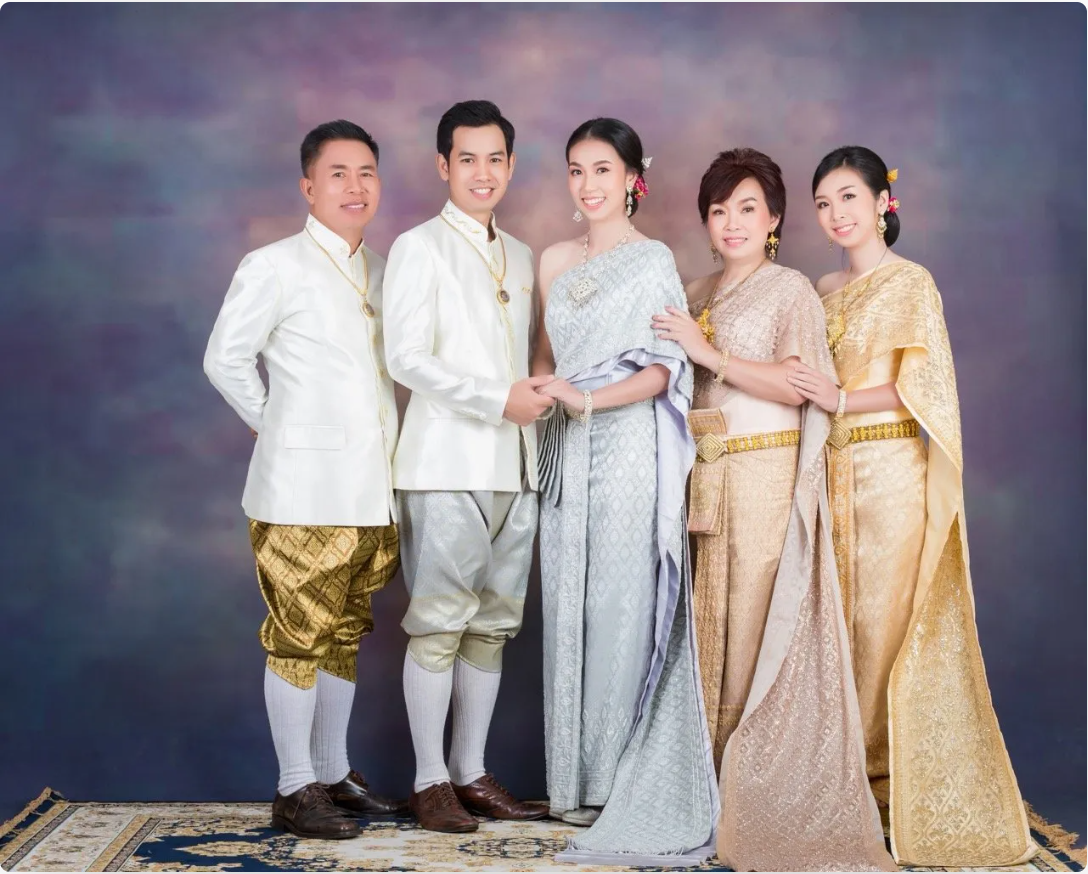 Source: Pnuar006 / Shutterstock.com
Source: Pnuar006 / Shutterstock.com
Later, the chong kraben (sometimes referred to as “knee breeches” or “riding breeches”) would become popular, worn by both men and women. Like the sarong, the chong kraben was also made by wrapping a single rectangular piece of cloth. However, the leftover fabric is then passed between the legs and tucked into the waistline.
Eventually, the forces of globalization in the 20th and 21st centuries led to more Westernized trousers. The sarong and chong kraben fell by the wayside, reserved for formal wear like the Thai national costume, no longer making sense in a modern world of elastic waistbands, zippers, and Velcro.
The rise of the elephant pants
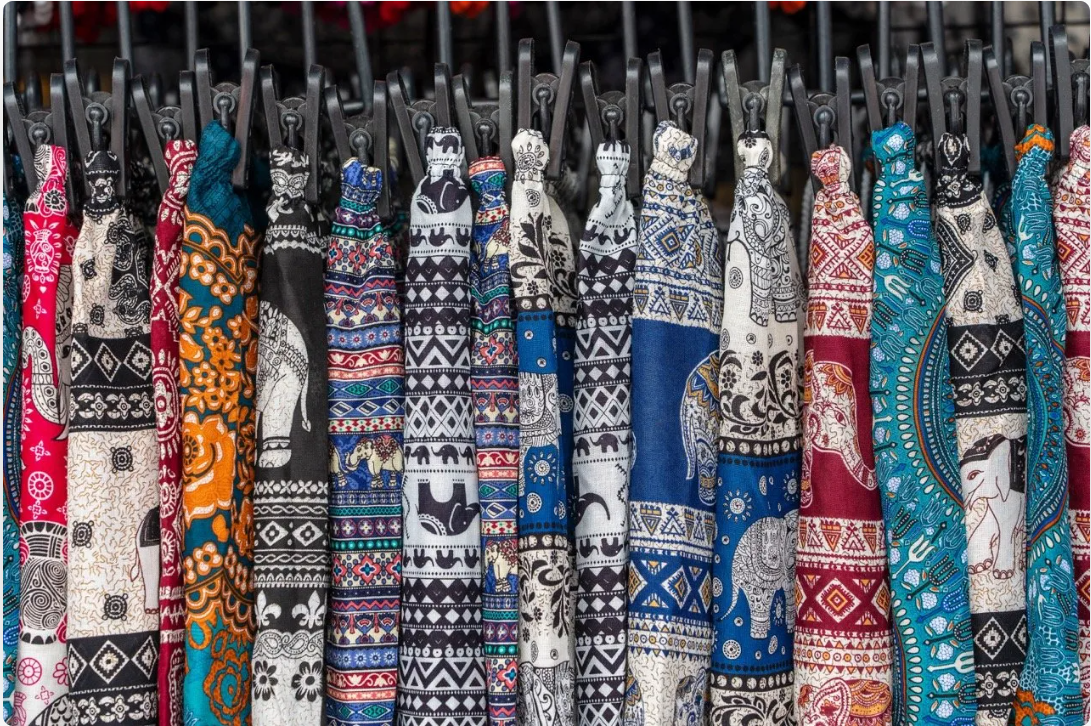 Source: OlegD / Shutterstock.com
Source: OlegD / Shutterstock.com
Elephant pants are a kind of drawstring harem pants, often made from breathable blends of cotton and rayon. Though they come in all sorts of colors and designs, the iconic Thai version features elephants — Thailand’s national animal.
Elephant pants first made their appearance in Thailand over 25 years ago and were almost exclusively worn by tourists who loved the comfort and style they provided — especially when paired with a Red Bull tank top. This naturally lent to a stereotyping of the pants as “touristy.”
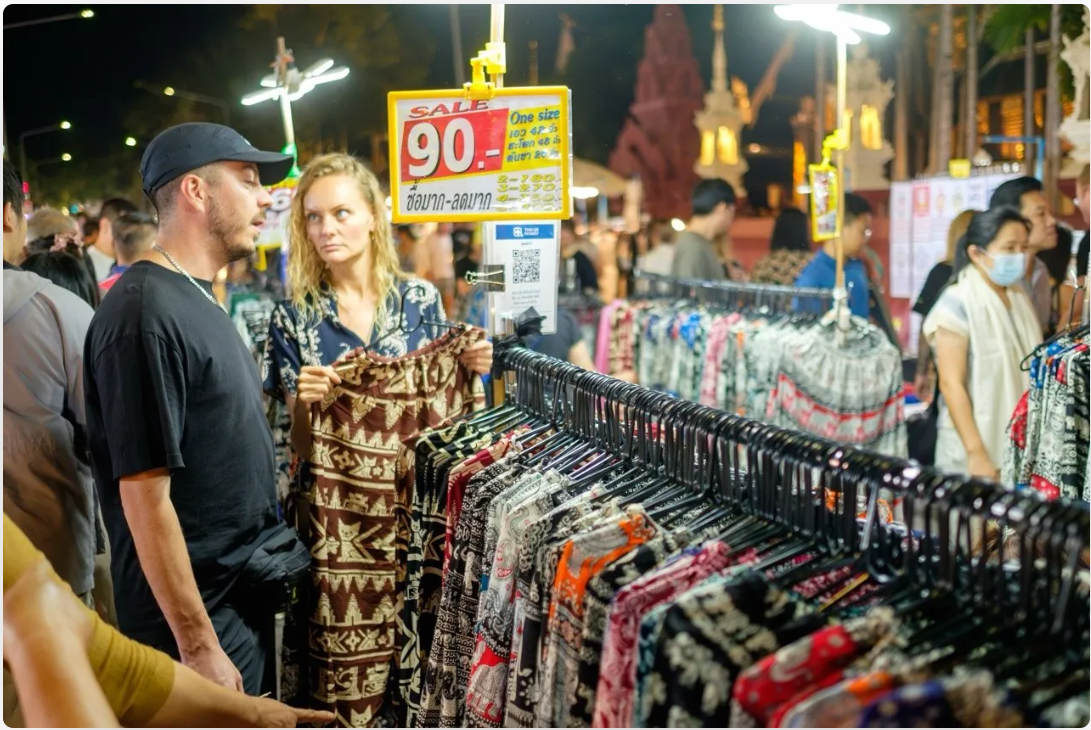 Source: Ham patipak / Shutterstock.com
Source: Ham patipak / Shutterstock.com
However, K-pop idols and TikTok influencers began to wear elephant pants as early as 2019, which led to their explosion in popularity as de rigueur fashion when visiting Thailand. Since then, there have been other design variations looking to capitalize on the hype of elephant pants, including the Korat Cat pants.
Muay Thai shorts as a new Thai fashion icon
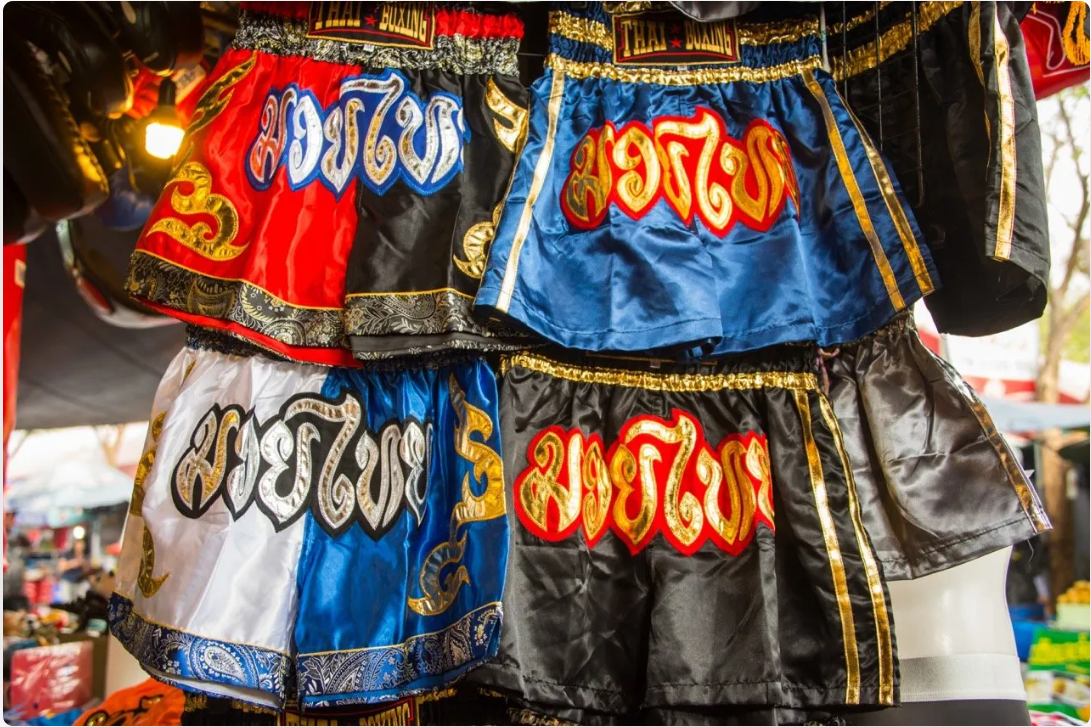 Source: Vassamon Anansukkasem / Shutterstock.com
Source: Vassamon Anansukkasem / Shutterstock.com
Muay Thai shorts are designed to give you maximum flexibility and comfort while in combat. The bright colors help you stand out from your opponent and can also advertise the fighter’s gym. It doesn’t take a giant leap (or flying knee) to see why these same shorts might be valued as a bold exciting fashion choice. But is it disrespectful to wear these shorts outside of the ring?
In general, the answer is no. Typically, Thai people are quite pleased to see people from other cultures wearing Thai clothes, Muay Thai shorts included. However, some foreign brands have released designs featuring Buddha images or other sacred Thai iconography. However, Thai culture considers the head to be the most sacred part of the body and the feet are considered dirty. Therefore, placing such imagery below the waist is considered disrespectful.
To avoid running into this problem, care should be taken to only purchase designs by Thai producers who have demonstrated a knowledge of such cultural sensitivities.
Fisherman pants not just for Thai fishermen
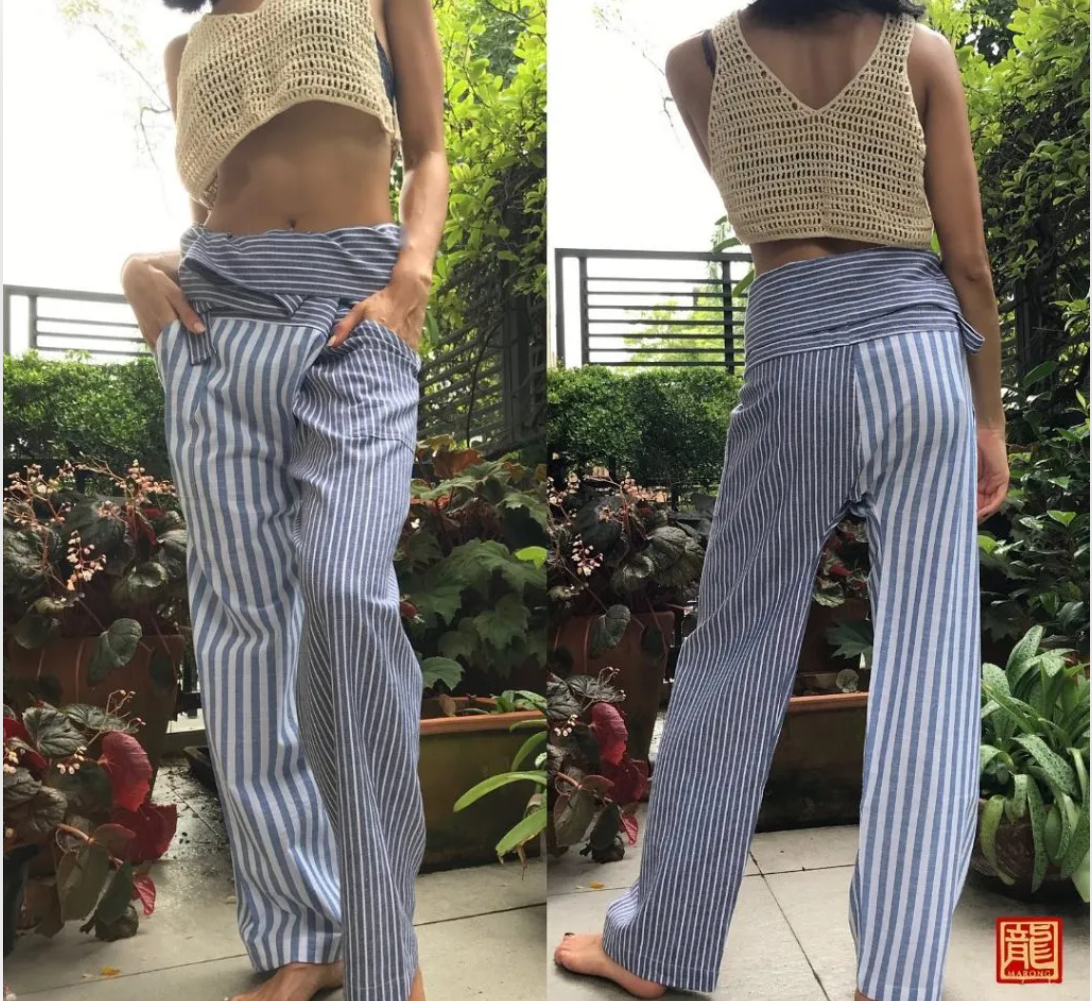 Source: @marongchaolaybkk Instagram account
Source: @marongchaolaybkk Instagram account
Finally, just over a century ago, along came fisherman pants. Also known as chao lay pants (literally, “People of the Sea” pants), these were the first popular garments in Thailand designed to cover the bottom half with stitching, as opposed to being exclusively wrapped.
Fisherman pants have drawstrings with non-elastic waistlines that can be folded over to fit various sizes. This also means they are one of the few pants that a woman can wear throughout her entire pregnancy! They are often made using local textiles like calico, hemp, bamboo, silk, and linen. Sometimes, they come decorated in traditional Thai designs. Nowadays, these pants are far more popular amongst women than men, even fishermen.
Oftentimes, fashion is cyclical, reinterpreting the old and remixing it with the new. With many of these examples, comfort reigns supreme, but only time will tell which classic garments will inspire the fit of the future. Inspiration can come from anywhere, as seen with the recent popularity of Thai school uniforms.
Nonetheless, it’s important to remember that fashion carries inherent risks, and only by taking the time to engage with Thai culture can we hope to avoid such fashion faux pas.
| Source: | 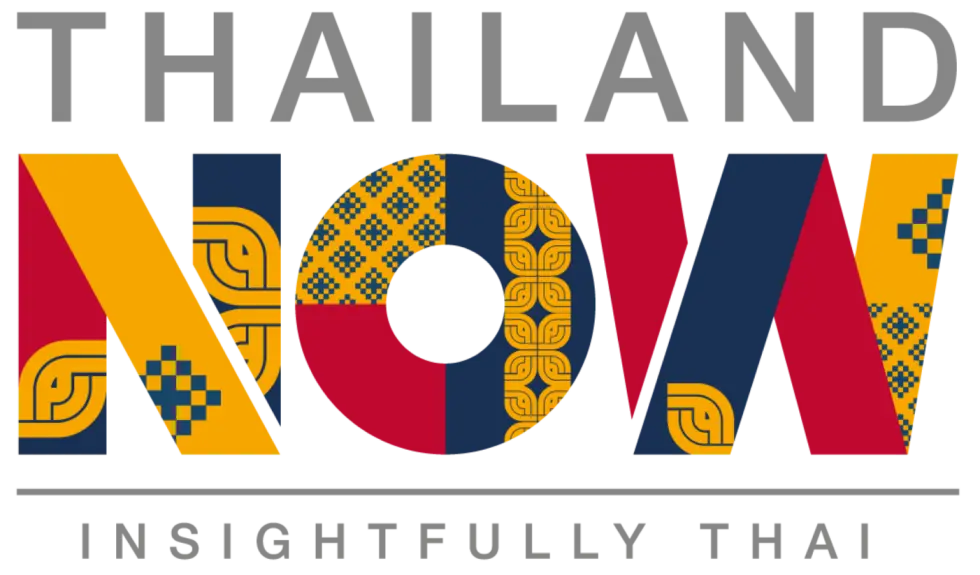 |
Thailand Trade and Economic Office (Taipei)
| เวลาทำการ |
วันจันทร์ - ศุกร์ | 9:00-12:00, 14:00-17:00 |
|
| 🕿 | บริการคนไทย | (8862) 2775 2211 |
| Thai Visa | (8862) 2773 1100 | |
| 🖷 | Fax | (8862) 2740-3300 |
| 🖅 | General Affairs | [email protected] |
| บริการคนไทย | [email protected] | |
| Thai Visa | [email protected] | |